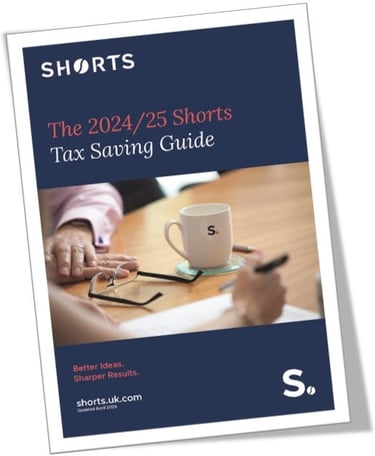
As most UK companies have now entered their 2025 financial year, it’s a good time to take stock of the tax incentives available to innovative companies – mainly R&D tax reliefs and Patent Box.
R&D tax reliefs – 2025 changes
For companies with a 31 March year-end, they will have just completed their first period under the new Merged RDEC scheme. This scheme replaces the SME and Large Company RDEC schemes and features more simplified elements.
The table below summarises what the reliefs are now worth under this scheme:
| Company type | From 1st April 2024 |
| Loss-making SME | 16.2% |
| Profitable SME up to £50k profits | Up to 16.2% |
| Profitable SME > £50k profits | 15% |
| R&D Intensive SME | Up to 27% |
| Larger company (non-SME) | 15% |
R&D Intensive SME applies where:
-
A loss-making company is deemed to be “R&D Intensive” and,
-
If >30% of the total company expenditure is spent on qualifying R&D expenditure.
The company can then claim the enhanced R&D deduction of 86%, and surrender the R&D-related losses for a tax credit of 14.5%.
For example, if a business spends £100,000 they can receive £26,970 back as a tax credit.
As the Merged RDEC scheme applies for accounting periods beginning on or after 1 April 2024, companies with a non-March year’s end could potentially still claim under the existing SME scheme with the 86% enhanced relief and/or 10% tax credit. This was worth up to 21.5% in tax savings/tax credit or the original RDEC, which is still 15%.
There are some notable changes to the rules on contracted-out R&D and overseas expenditure that came into force on 1 April 2024, under the Merged RDEC scheme.
New rules to contracted-out R&D benefit more companies
Contracted-out R&D has long been a contentious point, with HMRC having a different view from many in the advisory sector.
The new rules for contracted-out R&D are now much simpler. Generally, they allow a company that contemplates or intends for R&D to be initiated to make an R&D claim, irrespective of whether a customer contract is in place.
In the past, HMRC took the view that if R&D was performed to fulfil a customer's order or contract, the customer could claim R&D relief. From HMRC’s perspective, it was the customer who had “contracted out” the R&D.
Updates to HMRC advice on subcontractor rules for R&D relief
However, following a recent batch of tax tribunal cases that disputed HMRC’s view and found in favour of the taxpayer, HMRC has updated its guidance on subcontractor rules for R&D relief to reflect the tribunal’s decisions.
This will apply for periods not currently covered by the Merged RDEC scheme and has several consideration points that contrast with the “new” rules. Generally, HMRC’s view is that if a company is undertaking R&D that is “incidental” to a customer order/contract, then it can make a claim.
However, if the customer either directed the R&D activity or expected R&D to be performed by the company to fulfil that contract, then the R&D had been contracted out and it is the customer who can claim.
Overseas R&D changes
Overseas R&D expenditure on third-party workers and contractors is no longer allowed, in an attempt to focus R&D reliefs on UK-based activity. The new rules do contain some exceptions, which our updated guide to overseas expenditure covers in more detail.
Our thoughts on the new R&D landscape
After several years of changes to the schemes and intense HMRC scrutiny of claims, the landscape appears more settled. The scheme is more simplified and HMRC’s volumetric approach to enquiries has settled down to a more targeted approach.
HMRC is also looking to revamp the Advanced Assurance scheme to give businesses more certainty over the eligibility of claims. A current consultation period is ongoing until 26 May 2025. Although the reliefs might be worth less than before, they still remain an attractive way of reducing corporation tax or receiving a tax credit.
Patent box
Patent box remains a very generous way of reducing corporation tax on profits generated through patented products, processes or holders of exclusive licences.
Companies who hold UK or EU-granted patents qualify with no subjectivity to this. They will need to generate taxable profits through their UK company to benefit from the scheme, with some nuances on when best to elect into the scheme.
Overall, this is a straightforward scheme and benefits companies with a reduced corporation tax rate of 10% on the patent-related income, rather than the current 25% main rate of tax.
Next steps
R&D incorporates various rules and incentives that can make it difficult for businesses to navigate. Our Radius team at Shorts can help guide you through HMRC's requirements and determine what costs you can claim.

Darryl Hoy
Darryl is the Technical Director of the Radius team. He is a specialist in Research & Development tax reliefs, having previously worked at HMRC as an R&D Tax Inspector.
View my articles

